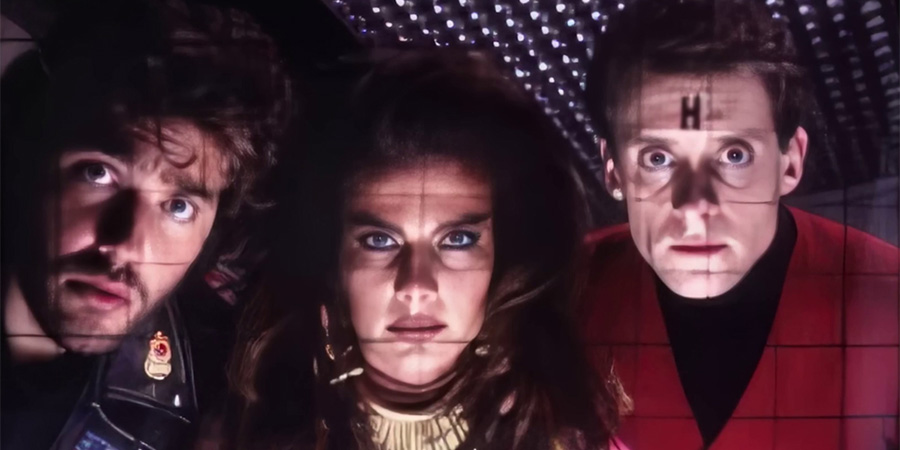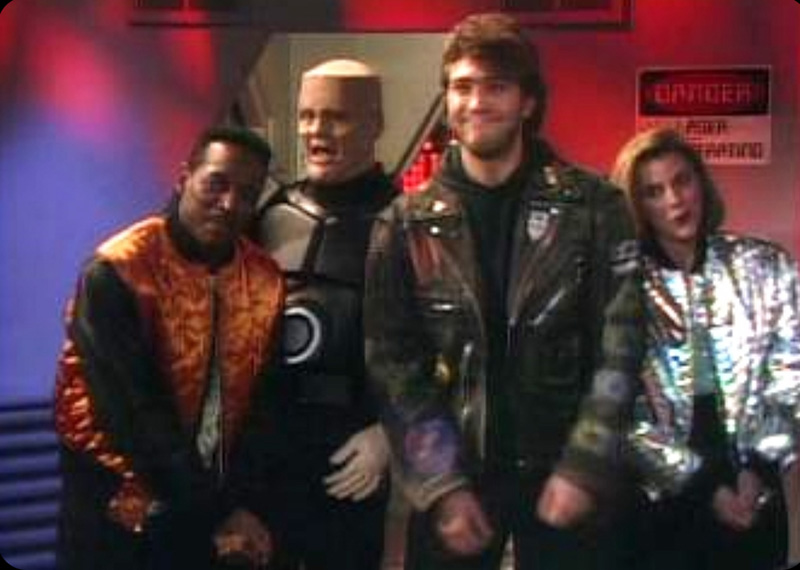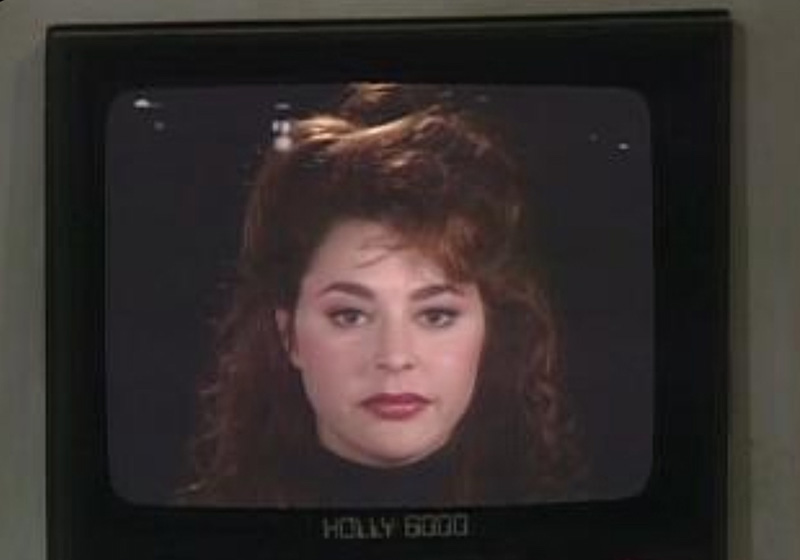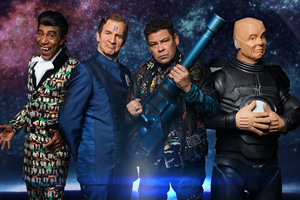Red Dwarf USA: Failure to launch

Discussing truly great British sitcoms, what is often brushed aside is that many - most, in fact - have a much-maligned American counterpart: an ill-advised one-off episode or series that rarely sees the light of day. From Fawlty Towers to Peep Show, Gavin & Stacey to The IT Crowd, Only Fools And Horses to Dad's Army, attempts have been made to localise every single one.
Not all are unsuccessful of course, The Office's US counterpart was a huge hit, but that was a loose reimagining rather than a line-by-line remake, and when creating something for an entirely different culture is it that part that is essential for the project to be in any way worthwhile? Otherwise, why not just watch the original?
It was 1992 and Red Dwarf was now a sci-fi sitcom phenomenon. Not just in the UK, but all over the world it had become a cult hit, so an attempt at a Stateside version seemed almost inevitable. Both Universal and NBC were interested in picking up the rights for a US audience, whilst Universal Studios also expressed interest in a Red Dwarf movie, something the series' writers and creators, Rob Grant and Doug Naylor were very keen on. This factor alone was probably a huge sway for them when it came to signing up for the eventual adaptation.
A one-off failed remake of a Britcom often passes with little comment. However, the Red Dwarf USA project was different - it had more weight placed upon it. It was a significant event in the show's history, meticulously detailed in the documentary Dwarfing USA. Its story is thus the next stop in the Red Dwarf retrospectives.
Grant and Naylor had recently completed filming Series V, and were exhausted having taken over directing duties. Nonetheless they headed out to the States to join a team who had already begun work on the American pilot. Officially, the future creator of Malcom In The Middle, Linwood Boomer, had penned the script. He would go on to win an Emmy for his writing of that show, a semi-autobiographical sitcom starring Frankie Muniz that became a cult hit in the UK - so what went wrong here?
The main issue seemed to be the number of writers adding jokes; Robert Llewellyn estimated that there were fourteen - it was far too many and the large writing room style of comedy script writing (which at the time consisted of writers brainstorming one-liners) just did not suit Red Dwarf as a show.
Doug Naylor has also mentioned that writers from both The Simpsons and Cheers were involved in this team. The first draft script for Red Dwarf USA clearly had a lot of talented people working on it, but was it a simple case of too many cooks? Naylor described the script as 'a botched, horrible version of the pilot' (referring to the original 1988 Red Dwarf debut), however, many changes had been made to the show since then. Rob and Doug were now used to writing for a very different style of Red Dwarf.
The original understanding had been that none of the UK cast would be reprising their roles. Naylor described it as a 'delight/horror' to find out that Llewellyn had been approached to once again take on the role of Kryten. Robert modestly revealed that he wasn't sure why they had approached him, and was initially nervous about signing a contract, but ultimately decided that a chance to make it in the US was an opportunity not to be missed. Meanwhile Rob and Doug were concerned about what this meant for cast relations and any prospect of Red Dwarf Series VI back at home.
In an interview on the Series V DVD documentary, Craig Charles described it as 'all water under the bridge now', but recalled finding out about plans for the remake from the make-up team (who would also be heading to the States to work on the pilot). Criticising the finished product, he explained: "The guy who played Rimmer was weak, but the guy who played me was really good and that's what pissed me off! He was 6' 4" and handsome!"
This handsome stranger was Craig Bierko, starring alongside Chris Eigeman as Rimmer (although he was barely seen in the pilot and would later be replaced by Anthony Fusco in a second show-reel) and Elizabeth Morehead as Kochanski. Jane Leeves played Holly, Hinton Battle took on the role of Cat and Lorraine Toussaint was cast in the supporting role of Captain Tau (the re-imagined Captain Hollister).

Danny John-Jules joined a growing chorus of people who insisted that the casting of Lister had been incorrect. He commented that John Belushi would have taken the role in an ideal world. Belushi was one half of The Blues Brothers: a great American comedy actor with a bright future ahead of him, but he had tragically passed away of a drug overdose aged just 33 in 1982 - years before Red Dwarf had even existed.
Doug Naylor, however, has always maintained that Craig Bierko would have made a great Lister, but the script would have needed to be tailored to suit him in much the same way that the UK scripts had been for Craig Charles. Unfortunately, they weren't able to do so. Instead, a lot of one-liners were simply localised, such as Lister's first remark when he realises that he's been in stasis for three million years. The original line "Three million years?! I've still got that library book!" was swapped out for "Three million years?! My baseball cards must be worth a fortune!"
Bierko's Lister was far cooler in the traditional sense and seemed to be more of a happy-go-lucky Star Wars fighter pilot than the degenerate space bum we know and love. He was already a big fan of the show, and clearly an all-round nice guy. Bierko reflected years later that his casting was the wrong choice. He described the pilot as:
A horrible Americanisation of a truly great British show. The original series was ridiculously brilliant. [The pilot] was just so unfunny, casting me was a huge mistake by the way, it should have been a John Belushi-type guy, but America went, "Oh we'll do a Han Solo type thing". I was like, "well... I want to pay the rent so great!" ... but it's instantly not funny, because it should be the opposite of what you've seen in Star Wars. This should be the guy you wouldn't want in charge of a spaceship.
In re-drafting the first script Rob and Doug became ostracised from the rest of the writers. Whilst everybody else chipped in gags they were more concerned with plot and characterisation. They were given the nickname 'The Wave', an allusion to what was perceived as a wave of negativity. Feeling jet-lagged and generally frozen out, they left to get some rest and the writing of the first script continued without Red Dwarf's creators.
Doug Naylor did not hold back in his criticism of the resulting script: "All humour had been stripped out of the show. It was just terrible."
He wasn't the only one with reservations. The US cast looked to Robert Llewellyn who attempted to be diplomatic. "I was so out of my depth", he recalled, telling the rest of the cast "Maybe we can make it work!" However, they all made it clear to him how they felt. "It's shit", they had collectively agreed.

Rob and Doug offered to write a new script at the eleventh hour: this was the night before filming was due to start. They vowed to work through the night to have a new script ready by the morning, but this offer was rejected. It didn't stop them from doing it anyway, but still a readthrough was scuppered so they resorted to sneaking copies under the casts' dressing room doors - who were shocked to see a new, markedly improved script. This caused something of a cast revolt, and the director eventually succumbed. It was agreed that the new script would be shot, but just when it seemed as though Rob and Doug had managed to wrangle a last-minute victory, they slowly realised that scenes from the original script were being recorded and the new material from their final revision was not. The pilot seemed to have slowly mutated back to that original version.
So, what did we end up with? Out of the chaos emerged one 25-minute pilot and a (second) 10-minute show-reel, which largely consisted of the US cast acting out some classic scenes from the original series line-by-line.
One part was a scene from Camille, just as it had originally appeared in Red Dwarf IV. This was simply to give TV executives who had never seen the show before a chance to see what Robert Llewellyn could do. After all, these were supposed to be in-house tapes, they were never intended for public viewing, and even original UK pilots of sitcom hits can remain locked away. They are, at the end of the day, experiments: a rough sketch, not the finished painting. However, when it comes to wonky US remakes of British sitcoms, they seem destined to be leaked. Even recently uploaded copies of the original Red Dwarf USA pilot (that look as though they've been recorded on Talkie Toaster) still get hundreds of thousands of hits. Before the internet the pilot was sold at fan conventions on VHS. It was the only way to get hold of a copy. Hattie Hayridge bought one such copy just to get a chance to watch it. "I did get a discount," she revealed.
To really cement that apparent intention to give Red Dwarf USA a Star Wars flavour the pilot opens with the famous text scroll before the original opening titles of Red Dwarf play. They are the classic titles that see Lister painting the ship with Howard Goodall's sensational dramatic score introducing us to the show. Right off the bat this was an interesting choice. From Series III onwards the show had moved to the bouncier 'Cold Outside' opening, which reflected the changing mood of the show; yet, here we are starting at the beginning with the drama of the first two series.
So which Red Dwarf were America after? The Steptoe And Son-style character-based contemplative humour of the first two series? Or, the sci-fi, action-adventure, traditional sitcom feel of the later era of classic Red Dwarf? What kind of Red Dwarf did the team want to make? Perhaps the biggest problem lies in that question going unanswered.

The first character we meet is Holly, played by Jane Leeves. As a replacement for Hattie's Holly she is a superb choice, yet the first line she is given (the joke about 6,000 PE teachers) was a gag delivered by Norman Lovett's Holly. Then later she is given some of Hattie's Holly routines, such as forgetting where she put the siren: "Awooga, awooga! Abandon ship!"
Despite the names remaining the same, Norman's Holly and Hattie's Holly were two entirely different characters. Norman's Holly was sly and sarcastic, quite comfortable with slagging off the entire crew; something Hattie's Holly never really did. Yes, they were both inept, but Hattie's Holly was far more naïve, honest and true. Would Hattie's Holly ever have pulled the stunt that Norman's did in Queeg? She would not. Therefore, mixing up their material caused a conflict with the basic characterisation of Leeves's Holly. In what was probably the best piece of casting of the entire pilot (Robert Llewellyn taken as granted), failing to perfect her character was a thoroughly wasted opportunity. Leeves would go on to prove her worth, winning the hearts of millions in one of the greatest sitcom will-they-won't-theys of all time in Frasier. Premiering in 1993, it is interesting to note she would never have starred in it if Red Dwarf USA had been picked up for a full series. Hattie Hayridge has pointed out that her performance in the pilot (the fact that she used her authentic British accent) may even have contributed to how she chose to play Daphne.
It's easy to forget that the original first episode of Red Dwarf had a unique energy. The mood can be summed up with the classic "Everybody's dead, Dave" scene. We wonder, why does that work? Because on paper it really shouldn't. Lister comes out of stasis and is told that everybody he has ever known and loved is dead and that he is alone in deep space millions of years from Earth. Norman and Craig play this scene very straight at the start - they're not looking for laughs initially. "Everybody, Dave" - that initial line, if you listen, there's no humour in it. Then a gradual build to "Gordon Bennett, yes Chen. Everybody!" By Lister's final line, "Are you trying to tell me that everybody's dead?" they are both directly playing for laughs. It's such a quick change of mood from one moment to the next, yet it works perfectly, making the scene iconic. The US pilot wisely avoided trying to recapture this moment, but the fact that it is missing, that it wasn't even attempted, really tells you that the idea of remaking the first episode of Red Dwarf (otherwise largely scene-by-scene) was a big mistake.
The plot, however, is changed to introduce Kryten right from the start. The focus is mainly on Robert Llewellyn and Craig Bierko with almost no emphasis on Rimmer. There's an attempt to pay lip service to his original plot line from the first episode, but the entire thing is extremely curtailed. Lister is so chipper that you just don't feel he particularly hates Rimmer, and vice versa.
So the drama is absent, and humour-wise there are a couple of good gags - but they largely involve Robert Llewellyn who knew exactly how to play Kryten. There aren't many lines he's given that aren't from the original Red Dwarf, but when we do see Rob performing new Kryten material it does work. He has a certain chemistry with Bierko's Lister. It's different, but it is there. After finding out about the disaster that wiped out the crew and catching up with Rimmer, Lister finds Kryten dismantled and abandoned in a part of the ship. Talking to his disembodied head he asks: "You've been stuck here for three million years? What have you been doing all this time?" Kryten replies: "Well, I've been reading that fire exit sign over there."
The line lands absolutely beautifully and the studio audience do seem to be fully engaged. We get a few 'aww's in the Kochanski moments, the laughter sounds genuine. For a pilot, the reception seemed quite positive, but die-hard Red Dwarf fans couldn't disagree more.
Danny John-Jules recalled going to a fan convention in America and being asked what he thought of the US pilot. He said "You're Americans, what did you think of it?" and a universal response came: "We hated it!"
At the time, Danny seemed to share Craig's overall feeling of betrayal. Craig Charles insisted in the Dwarfing USA documentary: "No one had told us about it. We just felt cheated, you know? Cheated."
Danny remembered attending Robert Llewellyn's birthday party and asking simply "Who played the Cat?" Rob replied, "A guy called Hinton Battle." Danny was amazed: "I thought 'No! It can't be?'"
Battle was one of Danny's heroes. He was a Broadway sensation. "He had three Tonys! This guy was the man!" Danny exclaimed. With such experience his casting seemed to make sense, but Cat almost certainly presented the greatest challenge when it came to a re-cast. Especially as for this pilot, where the character of the Cat had been reset and was at his most cat-like.
If the 2019 musical film Cats has taught us anything, it's that pulling off a convincing cat performance is one of the hardest things any actor can achieve. Rob told Danny that whilst on set he spotted Hinton Battle looking a bit downcast. He went up to him and asked if everything was okay. "Yeah, it's just that other guy was so good," he replied. Danny was stunned. "I'm like, man! It doesn't matter now. Hinton Battle has given me the green light!"
Danny was eventually approached to reshoot the pilot, but by that time he had signed up to appear in a play at the Old Vic. Chris Barrie was also asked to reprise Rimmer but he declined, feeling nervous about the prospect of signing a daunting Hollywood-style contract. There was also no budget for another pilot, hence the second "pilot" being nothing more than an incredibly short show-reel. Rob and Doug used this opportunity to reinvent the character of Cat entirely. 'He' was now a woman; it was one final throw of the dice. Cat had become a sort of femme fatale daredevil with nine lives played by Terry Farrell. Unfortunately we only see her in a two-minute scene, making it impossible to judge if the idea could ever have worked.
Craig Charles commented that Red Dwarf USA had been turned into 'White Dwarf'. He remarked: "It was very clean. There was no grunge in it. No curry stains, no custard. It was very sort of homogenised, very American."
Despite everything, filming of the initial pilot wrapped up with a level of optimism, certainly from the crew. When the news of its failure came through it was almost universally agreed that Red Dwarf USA wasn't picked up due to the quality just not being there. However, Robert Llewellyn offered an intriguing alternative theory:
The reasons for it not happening? Who knows! It's a mystery, but at that time I know that NBC, who it would have been for... they made, I don't know how many pilots, I mean, they make a lot ... but they made three pilots in their own studios, the NBC Studios in Hollywood and strangely all three of those got picked up. NBC had really been pressuring Rob and Doug to make the series at the NBC Studios, and for, I'm sure really good reasons, they chose to do it at Universal, so it was a co-production.
Could this simple decision have derailed the Red Dwarf USA project from the off? Is there an alternate reality where Red Dwarf VI never happened? Or was the entire Red Dwarf USA cast merely part of an elaborate illusion created by the Despair Squid?
Although Rob and Doug were hugely disappointed by the end of their American dream, just a year later Red Dwarf proved that the boys from the Dwarf didn't need any American counterparts to make it big Stateside...
Help us publish more great content by becoming a BCG Supporter. You'll be backing our mission to champion, celebrate and promote British comedy in all its forms: past, present and future.
We understand times are tough, but if you believe in the power of laughter we'd be honoured to have you join us. Advertising doesn't cover our costs, so every single donation matters and is put to good use. Thank you.
Love comedy? Find out moreRed Dwarf - Complete Series I - VIII

For the first time, own the first eight series of the smash hit British comedy on Blu-ray - remastered in high-definition.
Chicken soup machine repairman and intergalactic loser Dave Lister awakes from suspended animation to discover he is the lone survivor of a radiation leak and is now three million years into deep space and the last surviving member of the human race.
Dave is soon joined by Arnold J. Rimmer, a hologram of his dead bunk-mate, a life-form who's evolved from his pet cat and Kryten, a neurotic sanitation mechanoid. Together this unlikely bunch of heroes attempt to find their way back to Earth, under the guidance of Holly, the ship's senile computer. Along the way they'll be brought back to reality, lose their mothership, become stranded on Starbug, bump into Lister's ex-girlfriend and find themselves back on Red Dwarf where the original crew have been resurrected by nanobots.
First released: Monday 14th January 2019
- Distributor: BBC
- Region: B
- Discs: 19
- Minutes: 1,466
- Subtitles: English
- Catalogue: BBCBD0441
![]() Buy and sell old and new items
Buy and sell old and new items
Search for this product on eBay
BCG may earn commission on sales generated through the links above.


